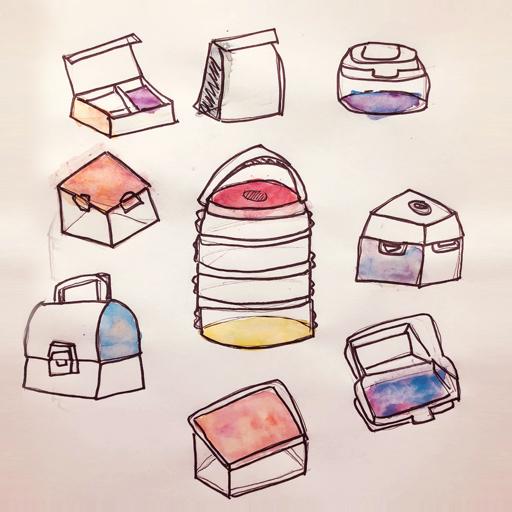The drawstring around the neck makes the neckline adjustable. It’s always nice to have things loose around the neck. The baby pink color looked brighter because of the smooth, silky fabric. Silky, not silk, and also a lot thicker to touch than silk. The borders around the neck and the long sleeves had crocheted lace in the same shade of pink. The frail tiny torso of a seven-year-old girl floats inside it like lost in space. She will slowly grow into the blouse (top), the mother thought, when buying it for the occasion of the school annual day event. The girl took five years to grow into it, her development being average and normal, and even then, there was some doubt if it had eventually started feeling snug or looked old and faded enough to be eligible for an official and ceremonious discard.

The letter looked perfect in its handwritten words of newly learned English language with a vocabulary that is ample and remarkably rapid in romantic monologues. It is old and tearing off along the folds. The paper is brittle, but the words are timeless. The addressee unknown, but from the content of the letter seems a woman much loved and admired. The addresser’s name is definitively familiar, and he could most likely be its writer too. He always had a penchant for words and was not a person who would use handed-down love letters to impress a woman. The boy found the letter in the inside pocket of the blazer his cousin handed him down. It was last worn at least a decade ago—survived time through gentle care of a mother who greatly values nostalgia and memories trapped in clothes. The boy wished to give the letter back to its owner but took the liberty to wonder if there is any use of it since the cousin’s wife is not the name addressed in the letter. The letter could have never been taken out of the pocket at all in a fit of a last-minute anxiety attack. Perhaps returned and yet safely kept in the pocket as a memory of unrequited love. It could also be that the leading lady was never after all made aware of the true feelings of a gallant classmate who wrote it all down but forgot where he left the letter, and the words just never came back. There’s no way to know, but the owner has outgrown both the blazer and the letter. The current owner barely appreciates a hand-me-down decade-old blazer but finds value in the letter’s obscurity than revealing its dramatic discovery from the past.
Clothes that wear out but haven’t got discarded in years. The threads that are coming off could possibly be reused as yarn and made into new clothes. Yet, discarding them is out of the question. Such is the value of some nightwear or housewear clothing items that people wouldn’t part with for anything in the world—the sense of comfort, longing, and strange everyday familiarity they provide, like a child’s blankie. No one is ever too old for that sense of security. Those cozy, comforting, inexpensive clothing don’t end up in landfills as fast as the clothing that represents the latest fashion. That ultra-slim shirt that deflates the body and consequently restricts eating altogether, not just overeating, gets thrown away right after the holidays. Then a new one is soon purchased again simply in anticipation of a new date.
Whatever happens to all those soft white shirts that are the lucky interview shirts during campus placement season! Confidence grows into them, and then one day, there is enough wisdom and sensibility to outgrow the fluke of a piece of clothing. When prosperity starts reflecting in one’s clothing, clothes’ value or meaning starts diminishing. Even before one has finished experiencing the full glory of strutting around in the season’s latest addition to their wardrobe, they are preordering the next one.
The wedding clothes carry all the weight of the meaningful events and their memories, but only of the first ones. The successive ones are hardly celebrated through dresses but sometimes end up being more meaningful and significant. If, however, wedding clothes could be less identifiable with a particular occasion, wearing them to office parties would mean some value for money.
Long after one has stopped growing into or out of clothes, when the body is altering not just in shapes and sizes anymore but in several other ways, people run out of clothes the most. What triggers these endless demands for garments are century-old topics within the discourse of consumerism. The frustrations of inadequacy, the personalities constructed upon the scaffolding of clothing – the biases that build boxes in our heads where we try fitting in the people, not just their clothes – GIVE MORE POWER TO THE CLOTHES.
On the planet of the garments, we live with clothes above us, with mounds of them casting shadows on our landscapes and with clothes beneath us, in landfills waiting to be reclaimed. Creativity in design calls for celebration, just as longevity of the fabric. Access to affordable clothing is welcome just as innovation in waste management, ensuring we don’t have to eat and drink our clothes in the long run when they have managed to leach into the ecosystem of food and water. It is a beautiful and confident feeling to look our best and step out into the world that is also draped in beauty. If nature’s beauty is in its familiarity, its repeated replenishment, there is hope and possibility of newness in recycled and repurposed pieces of clothing too. All we need is open spaces in our minds and stop crowding them with boxes to fit in.
Leave a Comment at comments@thedailylifemagazine.com
Author: Staff Contributor
Illustration/Photograhy: TDLM Design Team











 Report This
Report This
Leave a Reply
You must be logged in to post a comment.